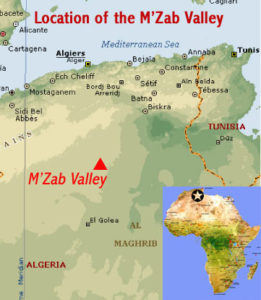Iraqi Jewish Archive
 Preserving the Iraqi Jewish Archive
Preserving the Iraqi Jewish Archive
Startling evidence of the once vibrant Jewish life in Iraq came to light in May 2003 — over 2,700 books and tens of thousands of documents were discovered in the flooded basement of the Iraqi intelligence headquarters by a US Army team.
The remarkable survival of this written record of Iraqi Jewish life provides an unexpected opportunity to better understand this 2,500-year-old Jewish community. For centuries, it had flourished in what had generally been a tolerant, multicultural society. But circumstances changed dramatically for Jews in the mid-twentieth century, when most Iraqi Jews fled and were stripped of their citizenship and assets.
To provide accessibility throughout the world to the damaged materials found in 2003, the US National Archives and Records Administration and its partners have preserved, cataloged, and digitized the books and documents.
The IJA website: https://ijarchive.org
Searching the Iraqi Jewish Archive
Searching the Iraqi Jewish Archive is much like searching an electronic library catalog. To craft searches that will bring up the material that interests you, whether school records, Baghdadi chief rabbis, or laws governing the Jewish community, it is important to understand what is in a cataloging record. Records for books include the most complete publication information available and may include the title in its original language and in transliteration, author, Hebrew and secular dates of publication, place of publication, and publisher. This is followed by a short, two-to-three-sentence description of the book and then a list of keywords. Documents similarly have a title, description, and keywords. The results of any search will be a title or descriptive title plus a brief cataloging entry and a picture. Click to see a more extensive description as well as keywords related to the entry and a PDF of the actual book or archival record (these PDFs can be viewed on an online e-reader or downloaded). Suppose you searched for “Frank Iny School”: you would find not only student records but also bills, correspondence, receipts, and class rosters. To narrow a search to just student records, try a new search on the keyword “students”. The most common terms are included to facilitate searching. Transliteration follows the Library of Congress Rules of Romanization for Hebrew and for Arabic Alternate spellings for certain Hebrew and Arabic transliterations will continue to be added.
Search the collection: https://ijarchive.org/search
Correspondence to and from Rabbi Sasson Khedouri
This archival material includes most correspondence with Rabbi Sasson Khedouri.
Topics include: correspondence from Midrash Talmud Torah regarding educational and financial matters; election of members to a Management Committee for the Baghdad Brigade; letter to the Ministry of Foreign Affairs regarding Rabbi Khedouri’s testimony before a British-American Commission of Inquiry on the state of Israel; document of questions and Rabbi Khedouri’s answers on the following issues: Jewish status in Iraq, the state of Israel, equality of Jews on paying taxes, education, obtaining jobs, business, religion freedom, travelling, teaching Hebrew, and the number of Jews in Iraq; a form to collect factual information on the Jewish community to be published in the al-Rafidain Directory; a letter from Iraq Red Crescent Society to the head of Jewish community regarding the death of three Iraqis in Java, Indonesia prisons; a letter from a researcher; an invitation for a theater play from the Children’s Protection Society; Shamash Company asking for help to distribute fabric to the poor; letter of complaint from a Muslim because some Jews entered the al-Kazmia holy place; a complaint regarding the Jewish community’s girls behavior; letter asking for help on a forgery matter; letter asking for help from a Russian Jew who moved to Baghdad; letter asking for help to get papers from the Ministry of Supply to print the Jewish annual calendar for 5708; letter from the al-Jafería Schools Association asking for book donations to build a library; letters to the head of the Jewish community regarding obituaries for martyrs; letter to write an introduction for a book about Iraqi Crown Prince Abdullah; letters from the President of the Jewish Community asking for help on some matters.


